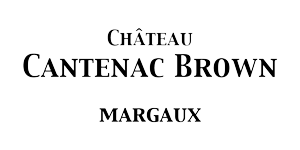Chateau Cantenac Brown, Grand Cru Classé from 1855, in Margaux was founded 200 years ago by a Scottish John Lewis Brown. Recognizable by its spectacular Tudor-style chateau, Cantenac Brown is still family owned today and has announced the construction of a new, unique winery made entirely of raw earth.
Cabernet Sauvignon is one of the grape varieties at the heart of the Château Cantenac Brown grand vin blend. However, do you know the background of this grape variety? In this article, we propose to discover the formidable history of this grape variety which reigns on the plateaus of Cantenac and Margaux; within which it sublimates the expression of the soil.
Origins of the Cabernet Sauvignon
For a long time, the origins of Cabernet Sauvignon were difficult to find. Indeed, the etymological variations of the different accounts of the time made its identification difficult by being named “petite vidure”. The first mention of the term “Cabernet Sauvignon” dates back to 1783 by the Intendant Dupré de Saint-Maur, in Pauillac.
At the end of the 1990s, researchers discovered the origin of this grape variety. As its name indicates, it comes from a cross between Cabernet Franc, a black grape variety, and Sauvignon Blanc. This crossing would have appeared randomly in the 17th century. If this origin was suspected for a long time, because of the etymological dimension of the grape variety and its organoleptic qualities, the confirmation of this one traces the geneaology of this king of Margaux’s terroirs.
Recognizing Cabernet Sauvignon
Recognizing Cabernet Sauvignon is a challenge that is carried out in two places: in the vineyard and in the glass. In the following article, we give you all the clues to recognize this grape variety.
Recognize this variety in the vineyard
This globally cultivated grape variety is recognizable by many characteristic features. Among these are its leaves with a thick down, a U-shaped petiolar sinus and deep lateral sinuses that form five globes. The bunches are of medium size and the grains small and tight.
Moreover, this variety resists well to diseases and different climatic hazards. This explains why, in Bordeaux, it is often the last grape variety to be harvested. If you go for a walk in the vineyards or take advantage of the harvest to visit Château Cantenac Brown, there is a good chance that you will pass by magnificent Cabernet Sauvignon vines.
Recognizing Cabernet Sauvignon in the glass
Cabernet Sauvignon is recognizable among the other grape varieties by the freshness and quality of the tannins it brings. These qualities make it perfect in the blends of the Médoc’s great wines, along with Merlot and Cabernet Franc. Indeed, this grape variety is always vinified as a blend.
Its freshness, especially on the finish, highlights red fruit and menthol notes. The vegetal side of Cabernet Sauvignon is sometimes described by notes of “green bell pepper”. While these are not considered a flaw, they need to be well balanced. This is one of the reasons why this variety is only used in blends.
Serving temperature of Cabernet Sauvignon
The serving temperature is a crucial component to ensure optimal wine enjoyment. In this sense, it is important to prepare the wine at the right temperature before serving it. For wines made from Cabernet Franc, as is the case in many of the 1855 Grand Cru Classé wines, the ideal serving temperature is between 14°C and 16°C. Indeed, these temperatures allow this grape variety to express its full potential while keeping a perfect balance between freshness and tannic load.
Food and wine pairing
The question of food and wine pairing is crucial to bring out all the qualities of this magnificent grape variety. The choice of a red meat is often excellent and will not disappoint you. You can thus continue your reading by discovering the pairings between wine and prime rib. Wines with this grape variety allow a perfect agreement with meats expressing a certain power. You will have no fear to serve it during your big lunches or dinners with a piece of meat.
Finally, Cabernet Sauvignon is a grape variety that increases tenfold the ageing potential of its wines. You will be able to keep your great wines for 10, 15, 20 years and even more without any difficulty. The tannins will progressively soften to give way to new aromas that will sublimate your different meals.


